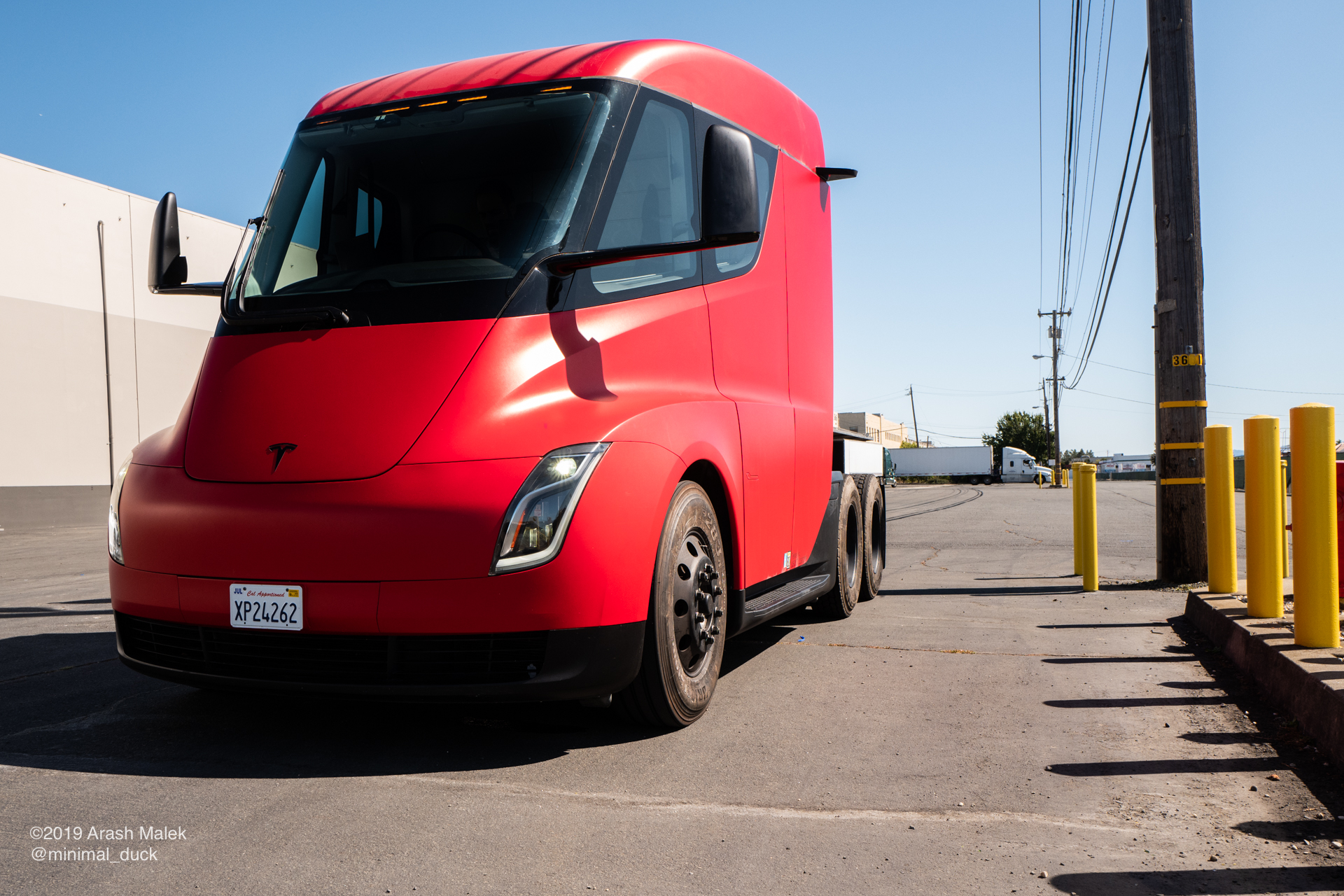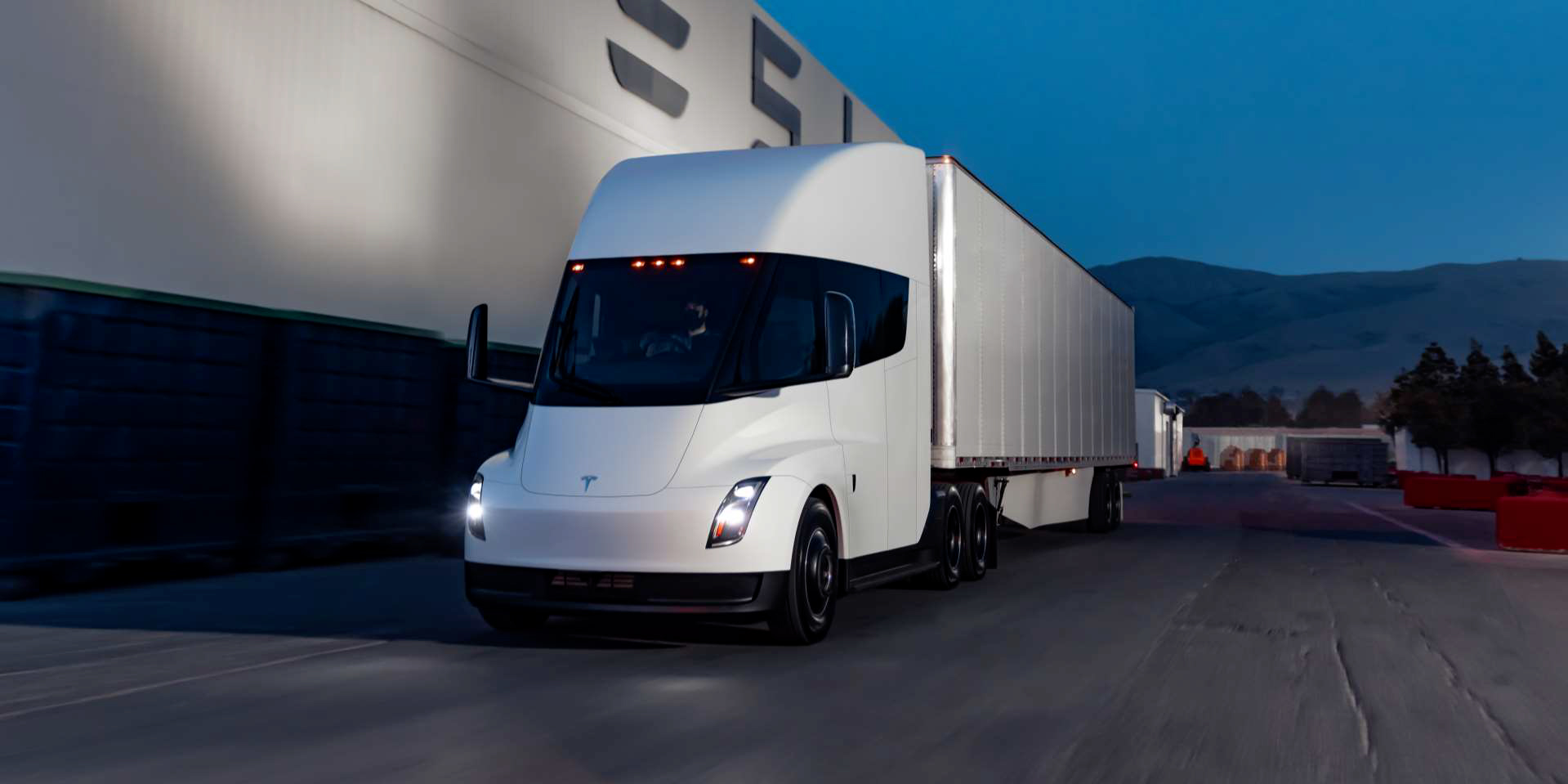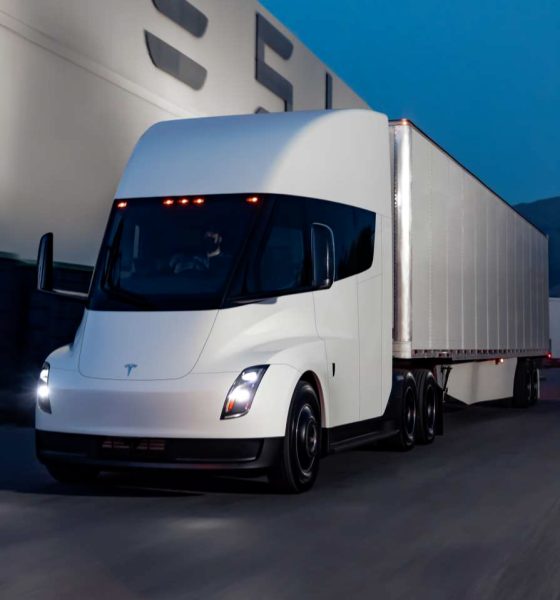During the Q2 2021 Earnings Call Update Letter released in late July, Tesla revealed that the Semi program would be delayed once again due to battery cell constraints and supply chain bottlenecks. However, developments regarding the Semi’s charging system still move forward, and one document from Ideanomics subsidiary WAVE proposes an extreme fast-charging system that would provide speeds of 500 kW and 1 MW. It would be void of cables, wires, and implanted directly into the roadway, providing power without having to plug in.
WAVE, an acronym for Wireless Advanced Vehicle Electrification, is owned by NASDAQ-listed company Ideanomics. WAVE develops high-power inductive charging solutions, but not for things like cell phones. They develop these charging systems for medium and heavy-duty vehicles, and the Tesla Semi may be one of the first vehicles to utilize the technology.
In the document, WAVE shares that extreme fast-charging systems are a sub-category of the company’s primary 250 kW business. However, it aims to develop 500 kW and 1 MW-capable wireless electric vehicle chargers for large-scale commercial vehicles using a primary coil embedded in the roadway and a receiving coil within the truck. Power would then be transferred using magnetic fields that are created by using a resonant inverter to create high-frequency AC currents to energize a charging coil. The energy from the coil underground would transmit energy to the truck, providing a charge without plugging in.
The Tesla Semi visits Yandell Truckaway. (Photo: Arash Malek)
WAVE specifically mentions the strengths of the system and how it could benefit the Tesla Semi, in particular. The document states:
“The current state-of-the-art drayage truck charging features primarily conductive chargers. The recently announced Tesla Semi concept design has the largest advertised range of 500 miles with a target 80% charge in 30 minutes. The battery pack is estimated to be at least 800 kWh (likely much higher to cover full load and all conditions) and must have a target charge rate of at approximately 1.5 MW. The system under development via the US DOE contract of charging an electric drayage truck at extreme fast-charging power levels will be the fastest charger by a significant margin.”
$IDEX The WAVE W-XFC is mentioned here with the advanced battery pack for the Tesla Semi as an example
-This very high power wireless charging system, COUPLED w/ AN ADVANCED BATTERY PACK that supports high rate charging will allow MD/HD trucks/buses to be charged in 20-30 minutes pic.twitter.com/yPtuD0VhyM— Konahuanui Investments (@konahuanui) August 6, 2021
This will be possible through WAVE’s recently-developed wireless charging system that can transfer up to 250 kW for bus charging at a distance of 250 millimeters, or 10 inches. “This is achieved by using a scalable modular approach. For this project, WAVE will increase the power level to 500 kW.”
WAVE can achieve the increased power level by increasing the power rating and density of the electronics and the coil design. Uses for the idea can be applied to “a number of urban applications,” and WAVE indicates that it won’t be a technology exclusive to Class 8 vehicles.
Tesla has been developing the Megacharger for the Semi for several years and has achieved some impressive specs ahead of the vehicle’s release. In 2017 at the Semi’s unveiling event, CEO Elon Musk said that Tesla would install a global network of solar-powered Megachargers that could provide 400 miles of range in just 30 minutes. An output of over 1 MW would make this possible, but to avoid potential dangers due to high energy output, Tesla filed for liquid-cooled charging connectors. Tesla uses something similar in its V3 Superchargers.
Yesterday, WAVE was awarded a contract to develop wireless inductive charging solutions by government organization Sourcewell.
Don’t hesitate to contact us with tips! Email us at tips@teslarati.com, or you can email me directly at joey@teslarati.com.

Elon Musk
Elon Musk’s X will start using a Tesla-like software update strategy
The initiative seems designed to accelerate updates to the social media platform, while maintaining maximum transparency.

Elon Musk’s social media platform X will adopt a Tesla-esque approach to software updates for its algorithm.
The initiative seems designed to accelerate updates to the social media platform, while maintaining maximum transparency.
X’s updates to its updates
As per Musk in a post on X, the social media company will be making a new algorithm to determine what organic and advertising posts are recommended to users. These updates would then be repeated every four weeks.
“We will make the new 𝕏 algorithm, including all code used to determine what organic and advertising posts are recommended to users, open source in 7 days. This will be repeated every 4 weeks, with comprehensive developer notes, to help you understand what changed,” Musk wrote in his post.
The initiative somewhat mirrors Tesla’s over-the-air update model, where vehicle software is regularly refined and pushed to users with detailed release notes. This should allow users to better understand the details of X’s every update and foster a healthy feedback loop for the social media platform.
xAI and X
X, formerly Twitter, has been acquired by Elon Musk’s artificial intelligence startup, xAI last year. Since then, xAI has seen a rapid rise in valuation. Following the company’s the company’s upsized $20 billion Series E funding round, estimates now suggest that xAI is worth tens about $230 to $235 billion. That’s several times larger than Tesla when Elon Musk received his controversial 2018 CEO Performance Award.
As per xAI, the Series E funding round attracted a diverse group of investors, including Valor Equity Partners, Stepstone Group, Fidelity Management & Research Company, Qatar Investment Authority, MGX, and Baron Capital Group, among others. Strategic partners NVIDIA and Cisco Investments also continued support for building the world’s largest GPU clusters.
News
Tesla FSD Supervised wins MotorTrend’s Best Driver Assistance Award
The decision marks a notable reversal for the publication from prior years, with judges citing major real-world improvements that pushed Tesla’s latest FSD software ahead of every competing ADAS system.

Tesla’s Full Self-Driving (Supervised) system has been named the best driver-assistance technology on the market, earning top honors at the 2026 MotorTrend Best Tech Awards.
The decision marks a notable reversal for the publication from prior years, with judges citing major real-world improvements that pushed Tesla’s latest FSD software ahead of every competing ADAS system. And it wasn’t even close.
MotorTrend reverses course
MotorTrend awarded Tesla FSD (Supervised) its 2026 Best Tech Driver Assistance title after extensive testing of the latest v14 software. The publication acknowledged that it had previously criticized earlier versions of FSD for erratic behavior and near-miss incidents, ultimately favoring rivals such as GM’s Super Cruise in earlier evaluations.
According to MotorTrend, the newest iteration of FSD resolved many of those shortcomings. Testers said v14 showed far smoother behavior in complex urban scenarios, including unprotected left turns, traffic circles, emergency vehicles, and dense city streets. While the system still requires constant driver supervision, judges concluded that no other advanced driver-assistance system currently matches its breadth of capability.
Unlike rival systems that rely on combinations of cameras, radar, lidar, and mapped highways, Tesla’s FSD operates using a camera-only approach and is capable of driving on city streets, rural roads, and freeways. MotorTrend stated that pure utility, the ability to handle nearly all road types, ultimately separated FSD from competitors like Ford BlueCruise, GM Super Cruise, and BMW’s Highway Assistant.
High cost and high capability
MotorTrend also addressed FSD’s pricing, which remains significantly higher than rival systems. Tesla currently charges $8,000 for a one-time purchase or $99 per month for a subscription, compared with far lower upfront and subscription costs from other automakers. The publication noted that the premium is justified given FSD’s unmatched scope and continuous software evolution.
Safety remained a central focus of the evaluation. While testers reported collision-free operation over thousands of miles, they noted ongoing concerns around FSD’s configurable driving modes, including options that allow aggressive driving and speeds beyond posted limits. MotorTrend emphasized that, like all Level 2 systems, FSD still depends on a fully attentive human driver at all times.
Despite those caveats, the publication concluded that Tesla’s rapid software progress fundamentally reshaped the competitive landscape. For drivers seeking the most capable hands-on driver-assistance system available today, MotorTrend concluded Tesla FSD (Supervised) now stands alone at the top.
News
Elon Musk’s Grokipedia surges to 5.6M articles, almost 79% of English Wikipedia
The explosive growth marks a major milestone for the AI-powered online encyclopedia, which was launched by Elon Musk’s xAI just months ago.

Elon Musk’s Grokipedia has grown to an impressive 5,615,201 articles as of today, closing in on 79% of the English Wikipedia’s current total of 7,119,376 articles.
The explosive growth marks a major milestone for the AI-powered online encyclopedia, which was launched by Elon Musk’s xAI just months ago. Needless to say, it would only be a matter of time before Grokipedia exceeds English Wikipedia in sheer volume.
Grokipedia’s rapid growth
xAI’s vision for Grokipedia emphasizes neutrality, while Grok’s reasoning capabilities allow for fast drafting and fact-checking. When Elon Musk announced the initiative in late September 2025, he noted that Grokipedia would be an improvement to Wikipedia because it would be designed to avoid bias.
At the time, Musk noted that Grokipedia “is a necessary step towards the xAI goal of understanding the Universe.”
Grokipedia was launched in late October, and while xAI was careful to list it only as Version 0.1 at the time, the online encyclopedia immediately earned praise. Wikipedia co-founder Larry Sanger highlighted the project’s innovative approach, noting how it leverages AI to fill knowledge gaps and enable rapid updates. Netizens also observed how Grokipedia tends to present articles in a more objective manner compared to Wikipedia, which is edited by humans.
Elon Musk’s ambitious plans
With 5,615,201 total articles, Grokipedia has now grown to almost 79% of English Wikipedia’s article base. This is incredibly quick, though Grokipedia remains text-only for now. xAI, for its part, has now updated the online encyclopedia’s iteration to v0.2.
Elon Musk has shared bold ideas for Grokipedia, including sending a record of the entire knowledge base to space as part of xAI’s mission to preserve and expand human understanding. At some point, Musk stated that Grokipedia will be renamed to Encyclopedia Galactica, and it will be sent to the cosmos.
“When Grokipedia is good enough (long way to go), we will change the name to Encyclopedia Galactica. It will be an open source distillation of all knowledge, including audio, images and video. Join xAI to help build the sci-fi version of the Library of Alexandria!” Musk wrote, adding in a later post that “Copies will be etched in stone and sent to the Moon, Mars and beyond. This time, it will not be lost.”










